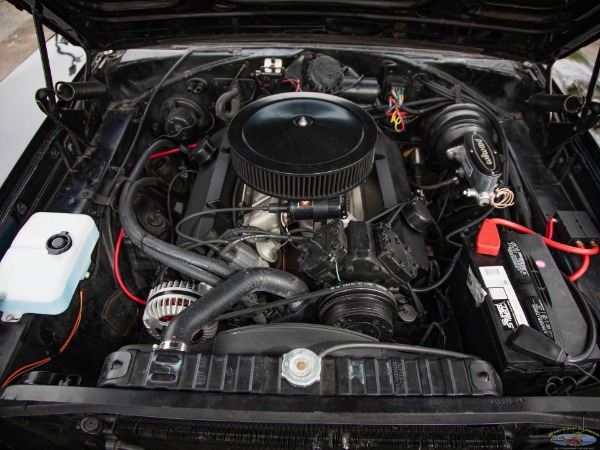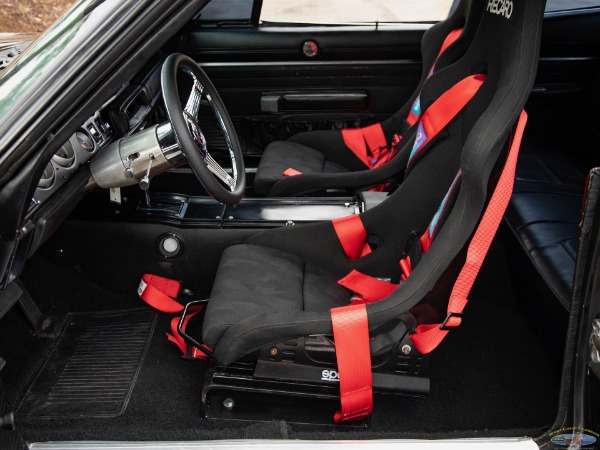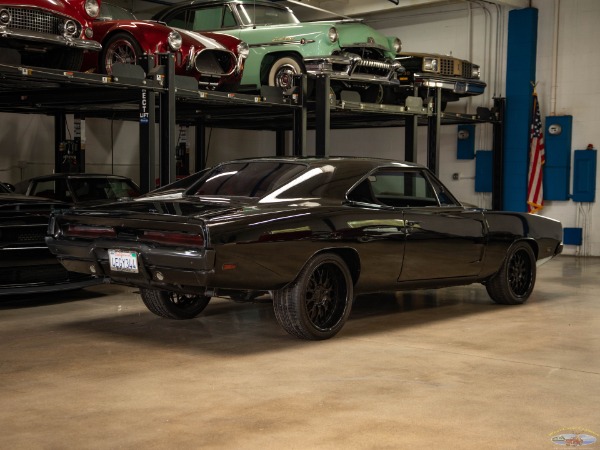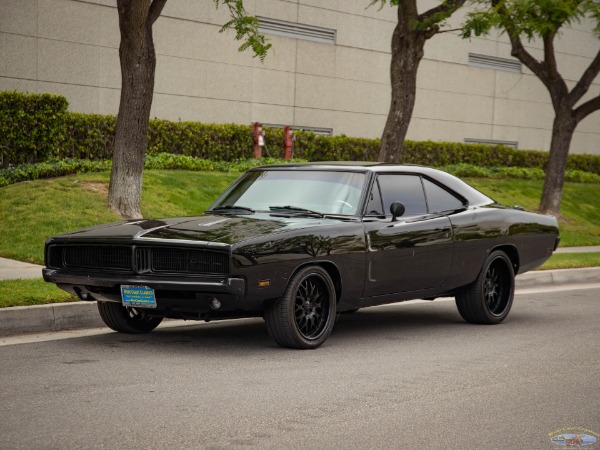Introduction to the 1969 Dodge Charger
Initially introduced in 1966, the Dodge Charger quickly became an iconic muscle car. By 1969, Dodge refined its design and performance, solidifying the Charger’s status in automotive history. Notably, the 1969 model year brought significant updates, enhancing both its aesthetic appeal and driving capabilities. Moreover, the Charger was positioned as a performance vehicle, appealing to enthusiasts seeking power and style. Consequently, the 1969 Dodge Charger remains a highly sought-after classic car today.
Historical Context and Development
Dodge designed the Charger to compete in the burgeoning muscle car market. The design team, led by Carl Cameron, aimed to create a car that was both aggressive and stylish. Additionally, the 1969 model incorporated feedback from previous years, refining its performance and appearance. The Charger’s signature “Coke bottle” styling, introduced in earlier models, was retained and further enhanced. This included a new split grille and revised taillights, adding to its distinctive look.
Importantly, Dodge focused on both form and function in the Charger’s design. The team improved aerodynamics while maintaining a bold, muscular profile. Furthermore, the 1969 Charger featured hidden headlights, a design choice that added to its sleek appearance. Designers also paid attention to interior comfort and technology, ensuring the Charger was as enjoyable to drive as it was to look at.
Design and Designers
The design of the 1969 Dodge Charger was spearheaded by Carl Cameron, who had previously worked on the 1966 Charger. Cameron’s vision included a more refined, aggressive look for the 1969 model. The exterior featured a split grille and full-width taillights, elements that became signature features of the Charger. Additionally, the “Coke bottle” shape was enhanced with sculpted body lines, giving the car a dynamic, flowing appearance.
Cameron’s team focused on creating a vehicle that stood out from the competition. They incorporated functional design elements, such as the hidden headlights, which provided a clean, uninterrupted front profile. Moreover, the team ensured that the Charger’s design was not only visually appealing but also aerodynamically efficient. This combination of style and performance helped cement the Charger’s place in muscle car lore.
Engine and Performance Specifications
Under the hood, the 1969 Dodge Charger offered a range of powerful engines. The base model featured a 318 cubic inch V8, producing 230 horsepower. For those seeking more power, Dodge provided several options, including a 383 cubic inch V8 and the renowned 426 HEMI. The HEMI engine, capable of producing 425 horsepower, was particularly popular among performance enthusiasts. Additionally, the Charger offered a 440 cubic inch V8, known for its torque and acceleration.
The 1969 Charger’s performance capabilities extended beyond its engines. Dodge equipped the car with a robust suspension system, enhancing handling and ride comfort. Furthermore, the Charger featured front disc brakes, providing reliable stopping power. These performance features ensured that the Charger was not only fast but also responsive and safe to drive.

Interior and Technology
Inside, the 1969 Dodge Charger combined style with practicality. The interior featured a driver-focused layout, with all controls within easy reach. Dodge offered several upholstery options, including premium materials like leather. The seats were designed for both comfort and support, making the Charger suitable for long drives. Additionally, the dashboard included a comprehensive set of gauges, providing drivers with vital information at a glance.
Technology-wise, the Charger included several advanced features for its time. The car was available with an optional AM/FM radio and an 8-track tape player, offering high-quality audio entertainment. Furthermore, Dodge incorporated safety features such as seat belts and padded dashboards, prioritizing driver and passenger safety. These interior elements combined to create a driving experience that was both enjoyable and secure.

OUR 1969 DODGE CHARGER
‘We presents a very striking example of this 1969 Dodge Charger 2 Door Hardtop with a date correct 383 c.i. V8 engine custom built and modified with high performance upgrades and an automatic transmission with dual exhausts and handling package with custom upgrades’
Production and Market Impact
Dodge produced the 1969 Charger at its Hamtramck Assembly plant in Michigan. The model quickly gained popularity, with its striking design and powerful performance appealing to a wide audience. Importantly, the Charger’s success was bolstered by its appearances in popular culture, including television shows and movies. These appearances helped solidify the Charger’s status as an American icon.
The market impact of the 1969 Charger was significant. It not only boosted Dodge’s reputation as a manufacturer of high-performance vehicles but also influenced the design of subsequent muscle cars. The Charger’s blend of style, power, and innovation set a new standard in the automotive industry. Today, the 1969 Dodge Charger remains a symbol of the muscle car era, cherished by collectors and enthusiasts alike.
Legacy and Influence
Finally, the 1969 Dodge Charger’s legacy extends far beyond its production years. Its design and performance continue to inspire modern muscle cars. The Charger’s influence is evident in contemporary models, which often draw on its bold styling and powerful engines. Moreover, the Charger remains a fixture in car shows and automotive events, where it is celebrated for its contribution to automotive history.
The enduring popularity of the 1969 Charger underscores its impact on car culture. Collectors and restorers strive to preserve these vehicles, maintaining their original features and performance capabilities. This dedication ensures that the Charger’s legacy will continue for generations to come. Ultimately, the 1969 Dodge Charger represents a pinnacle of automotive design and engineering, a testament to Dodge’s commitment to excellence.

Prominent Racing History
The 1969 Dodge Charger is not only iconic for its design and performance but also for its notable success in motorsport, particularly in NASCAR. Initially, Dodge aimed to dominate the racing scene with the Charger, leveraging its powerful engines and aerodynamic design. The car’s racing history began to flourish in the late 1960s, with the 1969 model year marking significant achievements on the track.
Importantly, the Charger R/T and the Charger 500 were introduced to enhance Dodge’s competitive edge in NASCAR. The Charger 500, specifically designed for racing, featured a flush grille and a modified rear window to improve aerodynamics. This design significantly reduced drag, giving the Charger a competitive advantage on high-speed tracks. Additionally, the Charger 500 was equipped with the powerful 426 HEMI engine, known for its incredible horsepower and torque.
OUR OTHER INVENTORY
1969 Dodge Charger In NASCAR
In 1969, the Dodge Charger Daytona was introduced, revolutionizing NASCAR with its radical aerodynamic design. The Daytona featured a pointed nose cone and a massive rear wing, which provided exceptional downforce and stability at high speeds. Moreover, the Daytona was the first NASCAR vehicle to break the 200 mph barrier, a testament to its advanced engineering and performance capabilities.
Racing legends like Richard Petty and Buddy Baker drove the Charger Daytona, achieving numerous victories and setting records. Petty, in particular, had significant success with the Charger Daytona, winning several races and securing pole positions. Furthermore, Buddy Baker made history by becoming the first driver to exceed 200 mph on a closed course in a Charger Daytona at Talladega Superspeedway.
The Charger’s success in NASCAR had a profound impact on Dodge’s reputation and the broader muscle car market. The victories and records set by the Charger solidified its status as a high-performance vehicle capable of competing at the highest levels of motorsport. Additionally, the innovations and design improvements developed for racing trickled down to production models, enhancing the performance and appeal of the Charger for everyday drivers.
The Charger’s dominance in racing continued into the early 1970s, with the Daytona and its successor, the Plymouth Superbird, becoming symbols of the aero wars in NASCAR. These vehicles showcased the importance of aerodynamics and engineering in achieving high-speed performance, influencing the design of future race cars.
Ultimately, the 1969 Dodge Charger’s racing history is a significant part of its legacy. The achievements on the track, combined with its striking design and powerful engines, cemented the Charger’s place in automotive history. The lessons learned from racing not only enhanced the Charger’s performance but also contributed to the evolution of muscle cars, inspiring future generations of high-performance vehicles.

